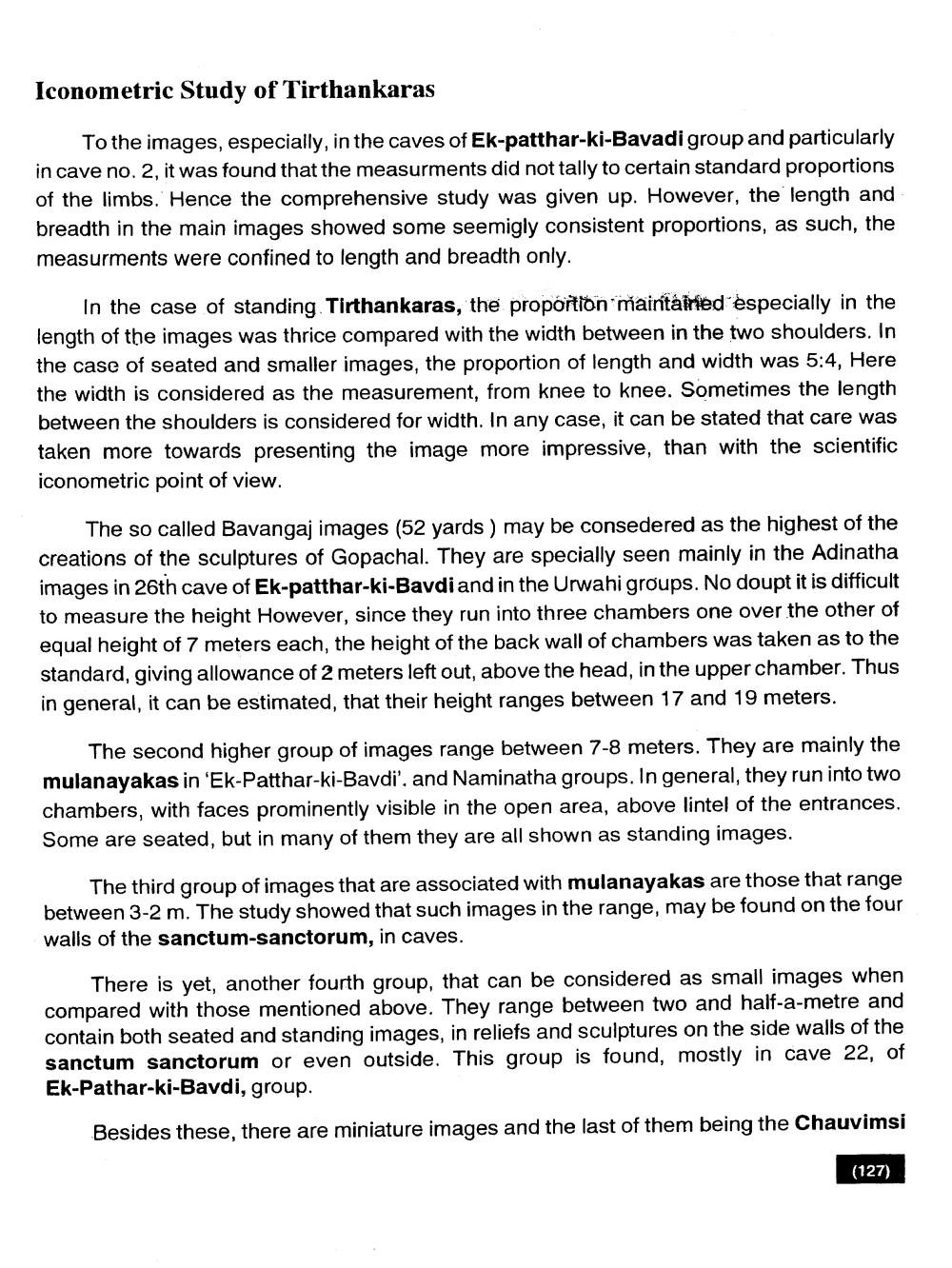________________
Iconometric Study of Tirthankaras
To the images, especially, in the caves of Ek-patthar-ki-Bavadi group and particularly in cave no. 2, it was found that the measurments did not tally to certain standard proportions of the limbs. Hence the comprehensive study was given up. However, the length and breadth in the main images showed some seemigly consistent proportions, as such, the measurments were confined to length and breadth only.
In the case of standing Tirthankaras, the proportion maintained especially in the length of the images was thrice compared with the width between in the two shoulders. In the case of seated and smaller images, the proportion of length and width was 5:4, Here the width is considered as the measurement, from knee to knee. Sometimes the length between the shoulders is considered for width. In any case, it can be stated that care was taken more towards presenting the image more impressive, than with the scientific iconometric point of view.
The so called Bavangaj images (52 yards ) may be consedered as the highest of the creations of the sculptures of Gopachal. They are specially seen mainly in the Adinatha images in 26th cave of Ek-patthar-ki-Bavdi and in the Urwahi groups. No doupt it is difficult to measure the height However, since they run into three chambers one over the other of equal height of 7 meters each, the height of the back wall of chambers was taken as to the standard, giving allowance of 2 meters left out, above the head, in the upper chamber. Thus in general, it can be estimated, that their height ranges between 17 and 19 meters.
The second higher group of images range between 7-8 meters. They are mainly the mulanayakas in 'Ek-Patthar-ki-Bavdi'. and Naminatha groups. In general, they run into two chambers, with faces prominently visible in the open area, above lintel of the entrances. Some are seated, but in many of them they are all shown as standing images.
The third group of images that are associated with mulanayakas are those that range between 3-2 m. The study showed that such images in the range, may be found on the four walls of the sanctum-sanctorum, in caves.
There is yet, another fourth group, that can be considered as small images when compared with those mentioned above. They range between two and half-a-metre and contain both seated and standing images, in reliefs and sculptures on the side walls of the sanctum sanctorum or even outside. This group is found, mostly in cave 22, of Ek-Pathar-ki-Bavdi, group.
Besides these, there are miniature images and the last of them being the Chauvimsi
(127)




